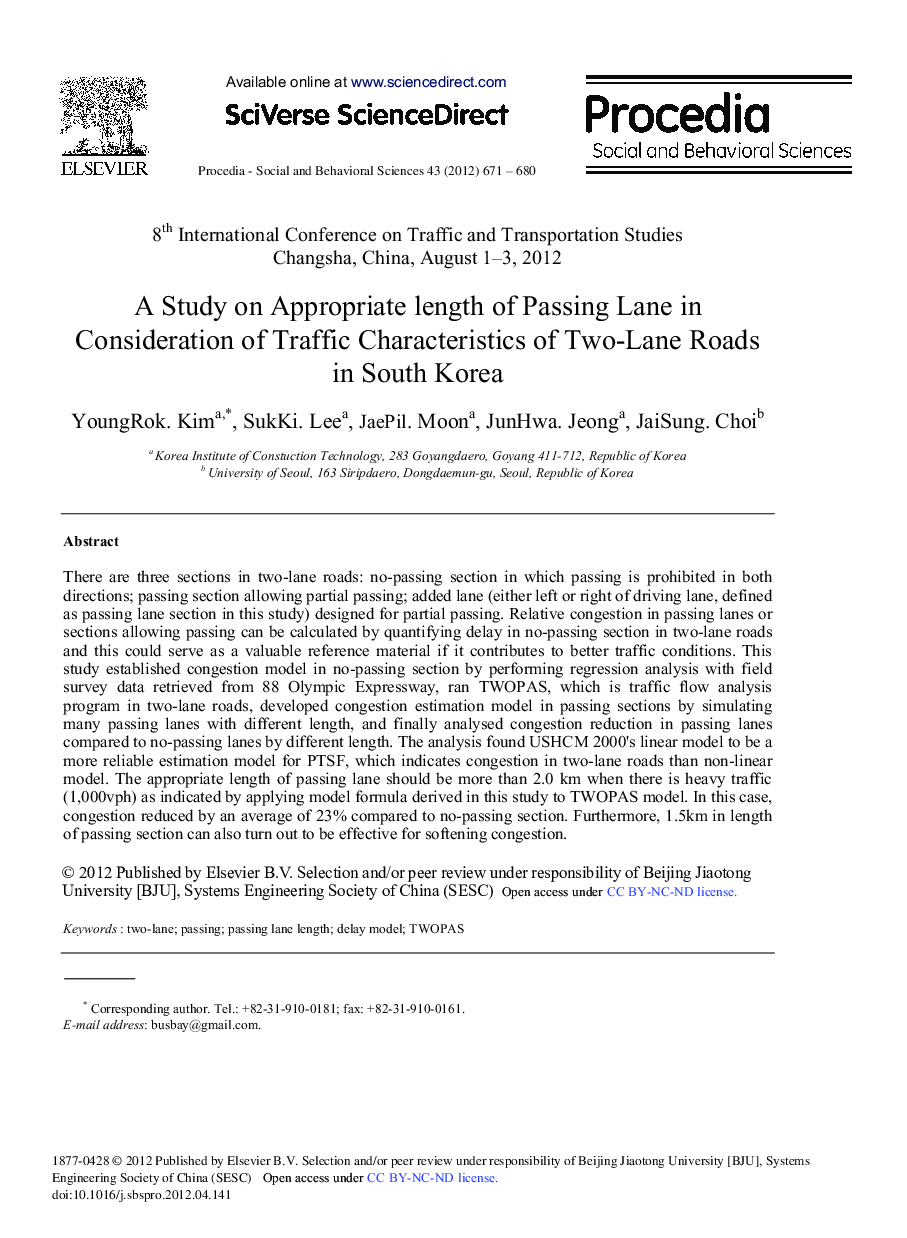| کد مقاله | کد نشریه | سال انتشار | مقاله انگلیسی | نسخه تمام متن |
|---|---|---|---|---|
| 1122150 | 1488516 | 2012 | 10 صفحه PDF | دانلود رایگان |

There are three sections in two-lane roads: no-passing section in which passing is prohibited in both directions; passing section allowing partial passing; added lane (either left or right of driving lane, defined as passing lane section in this study) designed for partial passing. Relative congestion in passing lanes or sections allowing passing can be calculated by quantifying delay in no-passing section in two-lane roads and this could serve as a valuable reference material if it contributes to better traffic conditions. This study established congestion model in no-passing section by performing regression analysis with field survey data retrieved from 88 Olympic Expressway, ran TWOPAS, which is traffic flow analysis program in two-lane roads, developed congestion estimation model in passing sections by simulating many passing lanes with different length, and finally analysed congestion reduction in passing lanes compared to no-passing lanes by different length. The analysis found USHCM 2000's linear model to be a more reliable estimation model for PTSF, which indicates congestion in two-lane roads than non-linear model. The appropriate length of passing lane should be more than 2.0 km when there is heavy traffic (1,000vph) as indicated by applying model formula derived in this study to TWOPAS model. In this case, congestion reduced by an average of 23% compared to no-passing section. Furthermore, 1.5 km in length of passing section can also turn out to be effective for softening congestion.
Journal: Procedia - Social and Behavioral Sciences - Volume 43, 2012, Pages 671-680